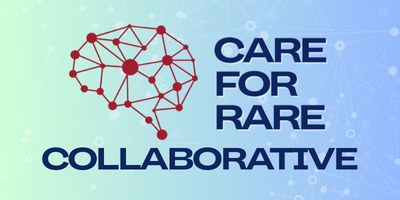
Trailblazing Treatments for Pediatric Brain Tumors
Picture a fortress built to guard precious treasure but accidentally also keeps out the very allies it needs in a time of crisis. This is the challenge faced by medical researchers when dealing with the brain’s natural defense — the blood-brain barrier — especially in children with brain tumors.
At Columbia University Medical Center, Dr. Luca Szalontay is leading the charge to breach this fortress with groundbreaking approaches. Recently, Dr. Timothy Cripe from Solving Kids’ Cancer’s podcast, This Week in Pediatric Oncology (TWIPO), interviewed Dr. Szalontay to delve deeper into these innovative treatments. This Brain Tumor Awareness Month, we’re shining a light on these important advances in treating children’s cancer.
Understanding the Challenge
Treating pediatric brain tumors like diffuse midline glioma (DMG) is especially tough because of the brain’s own protective shield, known as the blood-brain barrier. This barrier keeps out most chemotherapy drugs as well as large molecules, like antibodies, making it hard to treat the tumors effectively. Dr. Szalontay describes the dilemma: “Our field hasn’t been able to advance as quickly as it has with leukemias or other solid tumors because the drugs don’t penetrate the brain efficiently.”
She adds on the nature of this blood-brain barrier, “It’s evolutionary, very important to protect us from different toxins and harmful agents, but this is a shield which protects the tumor as well.” Even when drugs work well in lab tests, they struggle to get to the tumor in strong enough doses without harming the body.
Dr. Szalontay also points out that DMG tumors are found in very sensitive areas of the brain, making traditional surgery or radiation risky because they could damage vital brain functions. This makes finding safe and effective treatments for these tumors even more challenging.
So, what’s being done to tackle these obstacles and help kids fight these tumors?
Revolutionizing Brain Tumor Treatments
The Initiative for Drug Delivery Innovation (IDDI) at Columbia University, co-led by Dr. Szalontay and radiation oncologist Cheng-Chia Wu, MD, PhD, represents a dedicated effort to revolutionize pediatric brain tumor treatments.1 This interdisciplinary team, including key figures from Columbia’s biomedical engineering department such as Elisa Konofagou, PhD, and pediatric oncologists like Jovana Pavisic, MD, focuses on developing and applying cutting-edge drug delivery methods to improve outcomes for children with brain tumors.
The IDDI is pioneering the use of two particularly innovative brain tumor treatment methods: Convection Enhanced Delivery and Focused Ultrasound. These techniques are specifically designed to overcome the formidable challenges posed by the blood-brain barrier.

- Convection Enhanced Delivery: This method involves the direct delivery of therapeutic agents into the tumor via a catheter. Dr. Szalontay describes the process: “Using a baclofen pump, the drug is delivered continuously, ensuring it covers a larger area within the brain stem, similar to covering a globe.” This method has shown promise in clinical trials, where it improved the delivery of drugs to where they are most needed.
- Focused Ultrasound: Focused ultrasound and micro-bubbles-mediated drug delivery for brain tumors2 is a non-invasive technique that uses ultrasound waves to temporarily open the blood-brain barrier, allowing drugs to enter the brain. Dr. Szalontay notes, “Our focused ultrasound machine … is a bit different because it uses neuron navigation, allowing for precise drug delivery, enhancing the drug’s reach within the tumor.”
Impact and Next Steps to Personalized Therapies
The promising results from these innovative treatments are sparking hope. Dr. Szalontay shares, “We were able to enroll 10 patients, and we can say the majority tolerated the treatment well.” This success not only proves these new methods work but also shows their potential for broader use in battling pediatric brain tumors.
Looking ahead, Dr. Szalontay is energized by the potential of personalized medicine, which could revolutionize how we treat these cancers. She’s diving deeper into research that customizes treatments to match the unique genetic blueprint of each brain cancer type, improving both the precision and effectiveness of therapies. They’re moving towards using precision medicine techniques to find the best drug combinations for each patient, based on the tumor’s specific traits. “I’m really hoping that it’s in the near future for us,” she says. This tailored approach promises to significantly improve treatment results, leading the way to more personalized and powerful therapies in pediatric oncology.
It Takes a Village
Dr. Szalontay’s breakthroughs wouldn’t be possible without a strong team behind her. She often says, “These diseases and serving these patients — it really takes a village.” Her commitment to refining drug delivery systems not only enhances medical science but also lights a path of hope for many families facing these severe diagnoses.
As part of this village, Solving Kids’ Cancer (SKC) plays an instrumental role in pushing forward crucial research and treatment advancements. For over a decade, SKC has actively funded pre-clinical research and early-phase clinical trials for pediatric brain tumors, broadening the spectrum of potential treatments available for these challenging conditions. By actively collaborating with pediatric cancer stakeholders across the globe, we help ensure that the latest, most effective therapies reach the children who need them most, turning cutting-edge research into real hope for families.
Support the Fight Against Pediatric Brain Tumors
As we observe Brain Tumor Awareness Month, the work of Dr. Szalontay and her team at Columbia’s IDDI highlights the vital progress being made in the battle against pediatric brain tumors. Their efforts are a testament to the potential breakthroughs that can significantly enhance survival rates and quality of life for affected children.
Your support can keep this momentum going. When you donate to Solving Kids’ Cancer, you’re investing in a future where young patients not only beat the toughest cancers but also thrive with resilience and hope for tomorrow — because every kid deserves to grow up.
Source:
1 A New Paradigm for Pediatric Brain Tumors – https://www.pediatrics.columbia.edu/news/new-paradigm-pediatric-brain-tumors
2 Focused Ultrasound and Microbubbles-Mediated Drug Delivery to Brain Tumors –
https://www.ncbi.nlm.nih.gov/pmc/articles/PMC7823947/


















































































